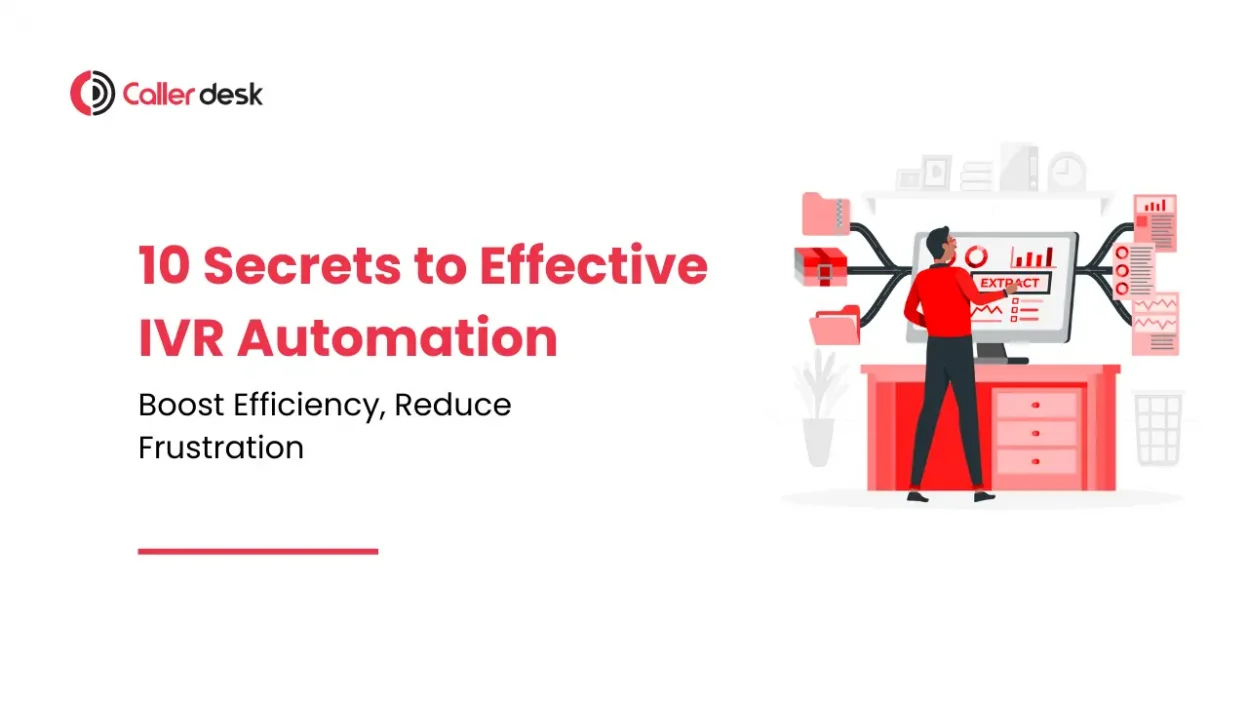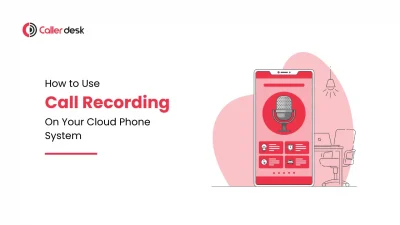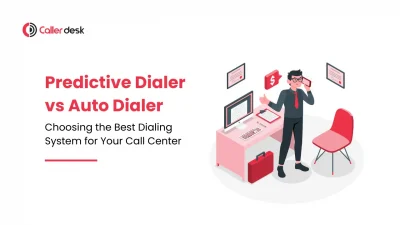Have you ever called a company and quickly got the help you needed – without even talking to a person?
That’s because of IVR Automation.
IVR automation means using smart phone menus that let customers speak or press buttons to get help automatically.
Instead of waiting in long call queues or talking to multiple agents, customers can solve their problems faster and easier.
Since the 1970s, IVR systems have improved a lot.
Today, modern IVR automation uses new technologies like speech recognition and artificial intelligence to make customer service even better.
Businesses use IVR automation to:
- Answer simple questions (like checking your balance)
- Guide callers to the right department
- Allow customers to complete tasks without waiting
When done right, IVR automation saves time for both customers and businesses — and creates a smoother, happier experience for everyone.
In this blog, we’ll show you 10 easy and powerful secrets to make the most out of IVR automation and keep your customers happy!
What is IVR Automation?
IVR automation means using technology to manage customer calls automatically — without needing a human agent every time.
Customers interact with the system by:
- Speaking (voice commands)
- Pressing keys on their phone (keypad inputs)
Modern IVR systems use advanced tools like:
- Speech Recognition – to understand voices.
- Natural Language Processing (NLP) – to understand what customers mean.
- DTMF – to recognize keypad inputs.
This helps businesses handle calls faster, answer customer questions, and complete simple tasks — all without making people wait.
10 Effective Ways to Use IVR Automation for Better Customer Satisfaction
1. Personalize the Caller Experience
Make every customer feel special – right from the start.
Greet them by their name if possible, and use past interaction history to offer more relevant options.
For example, if a customer usually checks their account balance, you can highlight that option first.
Personalization builds trust, makes the conversation smoother, and shows that you value their time and loyalty.
2. Simplify the IVR Menu
Customers don’t want to waste time figuring out where to go.
Limit menu choices to the 3–5 most important actions.
Organize them clearly – starting with the most commonly requested services.
A clean and easy-to-follow menu reduces confusion, speeds up the call, and improves customer satisfaction.
3. Provide Multilingual Support
Your customers may speak different languages — especially in a diverse country like India.
Allow callers to select their preferred language easily, preferably within the first few seconds.
This helps customers feel more comfortable, improves understanding, and prevents mistakes during the call.
4. Implement Intelligent Call Routing
Not every customer query is the same – so don’t treat all calls the same way.
Use IVR automation to route calls smartly based on:
- What they select on the keypad
- Their account type or purchase history
- Previous complaints or interactions
Also, inform callers about their queue number and expected wait time.
When customers know what’s happening, they feel less frustrated while waiting.
5. Empower Customers with Self-Service Options
Let customers solve their problems quickly without speaking to an agent.
Add easy self-service options like:
- Checking account balances
- Scheduling or cancelling appointments
- Updating their contact information
Make sure the system is simple to navigate, even for first-time users.
Self-service not only saves time for customers but also reduces pressure on your call center.
6. Offer Multiple Communication Channels
Today’s customers don’t stick to just one platform.
Many prefer switching between phone calls, emails, chats, WhatsApp, or social media.
Integrate your IVR automation with these channels.
If the issue can’t be resolved over the call, smoothly shift them to chat or email — without losing the conversation history.
This seamless experience makes your business look professional and customer-friendly.
7. Turn Hold Time into a Marketing Opportunity
Instead of boring your customers with elevator music, use hold time smartly!
You can:
- Share limited-time offers
- Inform them about new services
- Cross-sell or upsell related products
When done right, this not only makes the wait feel shorter but also increases your chances of more sales — all without spending extra money!
8. Improve Post-Call Communication
Don’t let the conversation end once the call disconnects.
Send polite and helpful follow-up messages via SMS or email:
- Thank them for contacting you
- Share links to FAQs, videos, or next steps
- Ask for feedback to know how you can improve
Post-call follow-ups show customers that you truly care about their experience and help maintain long-term relationships.
9. Connect IVR with Your CRM System
Link your IVR automation with a CRM like Salesforce, Zoho, or HubSpot.
This way, when a customer calls, agents immediately see their details — past orders, complaints, preferences — everything.
Benefits include:
- Faster service
- Personalized conversations
- Better problem-solving
Also, regularly track important metrics like:
- Call completion rates
- Customer satisfaction scores (CSAT)
- Abandoned call rates
Analyze these numbers to find areas to improve and keep making your IVR smarter.
10. Regularly Update and Test Your IVR System
An outdated IVR system frustrates customers more than it helps.
Keep improving by:
- Adding new menu options based on updated services
- Removing options that customers rarely use
- Making the script shorter and more natural
Also, test your IVR regularly like a customer would — call your own number, try different paths, and fix any confusion points.
A fresh and well-tested IVR system shows that your company is serious about delivering a great customer experience.
Conclusion
IVR automation isn’t just about handling calls faster — it’s about making every customer feel valued and supported.
By personalizing calls, simplifying menus, offering multilingual options, and empowering customers with self-service, you create a smoother, more satisfying experience.
Start using these 10 smart tips, and you’ll see happier customers, quicker resolutions, and stronger relationships.
And if you need a simple way to set up and manage IVR automation, CallerDesk is here to help you deliver service that truly stands out.





